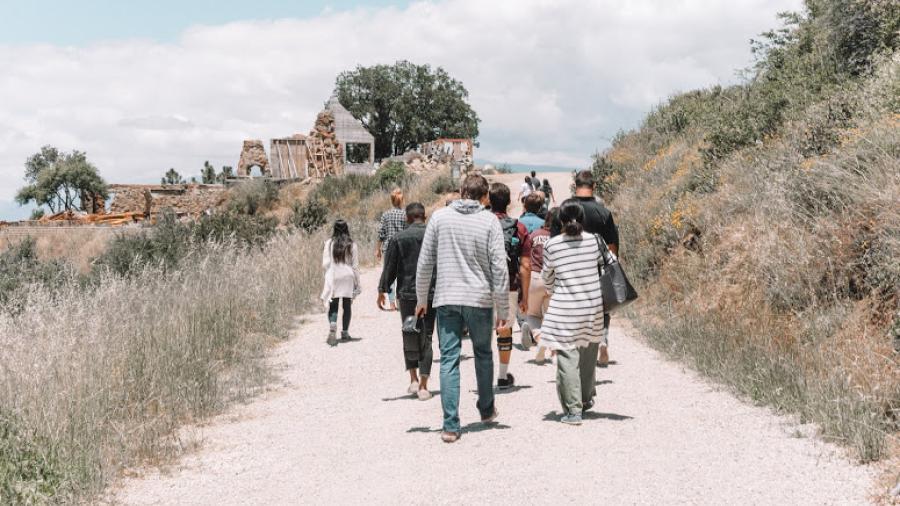Four Ways to Encourage Collaboration in the Workplace

When many people think of computer programming, the stereotypical movie hacker comes to mind—a hunched figure alone in a dark room, typing furiously at a bright screen filled with incomprehensible lines of jargon. Contrary to popular belief, however, STEM careers, including software development, are often highly team-oriented. A team of developers, not unlike a sports team, is comprised of individuals in different roles working towards a common goal, such as the completion of a project or the launch of an app. Every person accomplishes a different purpose, but those purposes find meaning only as parts of the whole. If collaboration is so important, how can we encourage it among programming teams, or even teams in general? We've thought of a few ways.
1. Establish a team identity early on
Just last week, the entire CATLab crew took a field trip to Knapp's Castle, a picturesque stone ruin nestled in the hills behind Santa Barbara. Focusing on intentionality and authenticity, we left our cellphones behind in order to be completely present with one another. While at Knapp's Castle, we worked together to write a cohesive, comprehensive team statement—a banner to unite under. When we feel frustrated or disillusioned, we can turn back to our team statement to remember why we're doing what we're doing and who we're doing it for.
2. Work as teams of individuals, not individuals in a team
While by no means universal, a temptation among programmers who work individually is believing that they're working in a bubble; they program as if the code they're writing is isolated with no real-world implications. Being aware of the people involved with our creations—whether a user interacting with the surface-level interface or a teammate editing the source code—reminds us that no project exists in a box. Our individual projects are just part of the bigger picture. The CATLab fosters team-level thinking by having several people develop the same component through pair programming; breaking bigger projects into inter-dependent chunks; and encouraging teammates to use each other as sounding boards (or even rubber ducks) for ideas and bug fixes.
3. Diverse people generate diverse ideas
Though we work with computers, we aren't computers ourselves. We're creative individuals with creative ideas, and a diverse team of highly creative individuals generates diverse, highly creative ideas. Working with a variety of perspectives takes individual ideas and bounces them off each other, removing the dross and refining them. Team activities like discussions, brainstorming games, and reading articles lend themselves well to getting excited about working together.
4. Relationships produce commitment
The inaugural CATLab team last summer often ate lunch together, fostering friendships in non-work settings. Taco Tuesdays (or in our so-very SoCal case, tri-tip Thursdays) encourage team members to invest in each other deeply outside of the context of colleagues. Building relationships is building commitment to both one another and to our work. If we care personally about our team members, we will care personally about their success and the success of the project as a whole.
Want to find out more? Check out the CATLab on social media here:
Interested in hearing more about Westmont College? Click to request information or schedule a visit!